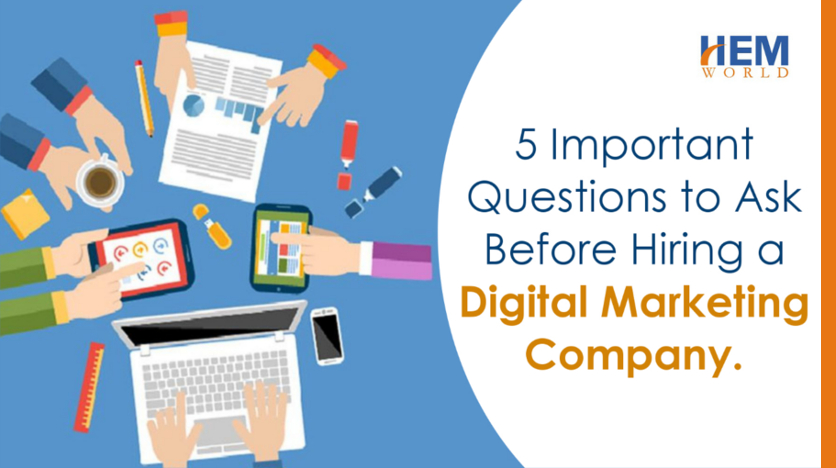As the world becomes increasingly aware of the impact of human activities on the environment, businesses are under growing pressure to adopt sustainable practices. This shift isn’t just about being eco-friendly; it’s about staying relevant in a market where consumers are making more informed, conscious choices. Sustainability in marketing has emerged as a crucial strategy for brands looking to resonate with today’s socially and environmentally aware audience. At Hemworld, we’ve seen firsthand how integrating sustainability into marketing strategies can drive not only brand growth but also meaningful change.
Why Sustainability Matters in Marketing?
The global push toward sustainability is not just a trend; it’s a paradigm shift. Studies show that 77% of consumers are more likely to purchase from companies committed to making the world a better place. This statistic underscores a simple truth: sustainability sells. Beyond consumer preferences, businesses adopting sustainable practices often enjoy operational cost savings, regulatory compliance, and enhanced brand loyalty.
In marketing, sustainability manifests in two significant ways:
Product and Service Innovation: Creating eco-friendly products or services.
Communication and Engagement: Effectively conveying sustainability efforts to the audience.
How Brands Are Adapting?
Many brands are leading the way by integrating sustainability into their core strategies. Here’s how they’re doing it:
1. Eco-Friendly Packaging
One of the most visible shifts is in packaging. Consumers are increasingly critical of excessive and non-recyclable materials. Brands like Coca-Cola and Unilever are reducing plastic usage, opting for biodegradable and recyclable materials. Startups such as Blueland have redefined product delivery by offering refillable packaging solutions that drastically cut waste.
2. Green Supply Chains
Sustainability begins long before a product reaches the consumer. Companies like Patagonia have set the gold standard for sustainable supply chains, ensuring every step—from sourcing raw materials to manufacturing—minimizes environmental impact. IKEA has committed to becoming fully circular by 2030, focusing on renewable and recycled materials.
3. Purpose-Driven Campaigns
Marketing messages have evolved to align with environmental and social causes. Campaigns like Nike’s “Move to Zero” emphasize the brand’s journey toward zero carbon and zero waste. These campaigns don’t just sell products; they communicate a vision that resonates deeply with eco-conscious consumers.
4. Digital Marketing Over Traditional Methods
Digital marketing inherently has a lower carbon footprint compared to traditional advertising. Brands are reducing print advertisements, direct mail, and event-based marketing to prioritize online strategies. At Hemworld, we’ve helped clients transition to sustainable digital campaigns that save resources and deliver measurable results.
5. Consumer Education
Successful brands use their platforms to educate consumers about sustainability. For instance, Levi’s has launched campaigns encouraging customers to wash jeans less frequently, reducing water usage. This not only demonstrates corporate responsibility but also empowers consumers to contribute to environmental conservation.
6. Collaboration and Partnerships
Collaboration amplifies impact. Brands like Adidas and Parley for the Oceans have teamed up to create shoes made from recycled ocean plastic. Such partnerships highlight the importance of collective action in addressing global environmental challenges.
The Role of Technology
Technology is at the forefront of sustainable marketing. Tools like AI and machine learning optimize campaign targeting, reducing wastage and enhancing efficiency. Blockchain technology ensures transparency in supply chains, helping brands verify and showcase their sustainability claims.
Digital platforms also enable brands to measure the success of their sustainability initiatives in real time. Analytics tools provide insights into consumer behaviour, helping businesses refine their strategies to align with environmental goals.
Challenges in Sustainable Marketing
While the benefits of sustainable marketing are undeniable, the journey isn’t without obstacles:
Higher Initial Costs: Sustainable materials and technologies often require significant upfront investment.
Greenwashing Risks: Misleading claims about sustainability can damage credibility and invite regulatory scrutiny.
Consumer Skepticism: Some audiences are wary of brands jumping on the sustainability bandwagon without genuine commitment.
Overcoming these challenges requires authenticity, transparency, and a long-term vision. Brands must ensure their sustainability claims are backed by concrete actions and measurable outcomes.
Tips for Integrating Sustainability into Marketing
If you’re looking to make sustainability a cornerstone of your marketing strategy, here are some actionable steps:
Audit Your Current Practices: Identify areas where your operations can become more eco-friendly.
Set Clear Goals: Define specific, measurable sustainability objectives.
Be Transparent: Share your journey, including challenges and milestones, with your audience.
Engage Your Community: Encourage consumers to participate in your sustainability efforts.
Leverage Storytelling: Use compelling narratives to highlight your impact and inspire others.
The Hemworld Approach to Sustainable Marketing
At Hemworld, we believe sustainability is not just a responsibility but an opportunity for innovation and growth. Our approach involves:
Customized Strategies: Tailored solutions that align with your brand’s values and goals.
Data-Driven Insights: Using analytics to optimize campaigns for maximum impact with minimal resources.
Collaborative Execution: Working closely with clients to create meaningful and measurable sustainability initiatives
Conclusion
Sustainability in marketing is no longer optional; it’s a necessity. As consumers demand greater accountability from brands, those that embrace sustainable practices will not only thrive but also shape the future of the industry. By adopting innovative strategies and staying true to their values, businesses can drive both profit and purpose.
At Hemworld, we’re committed to helping brands navigate this transformative journey. Let’s work together to create a marketing strategy that’s as sustainable as it is impactful.




